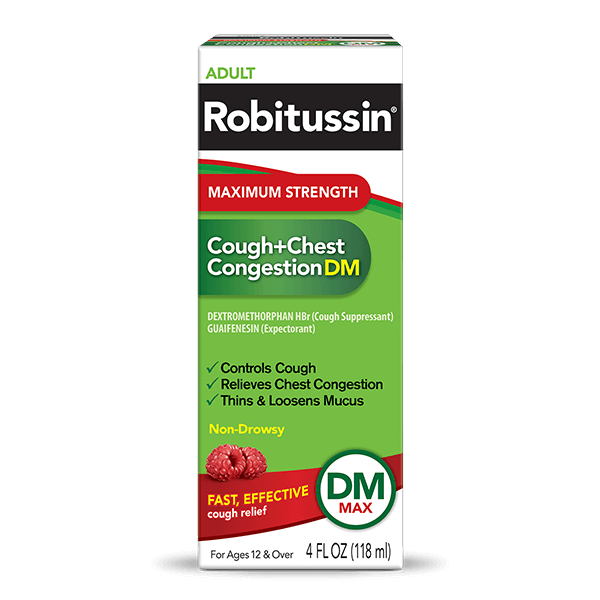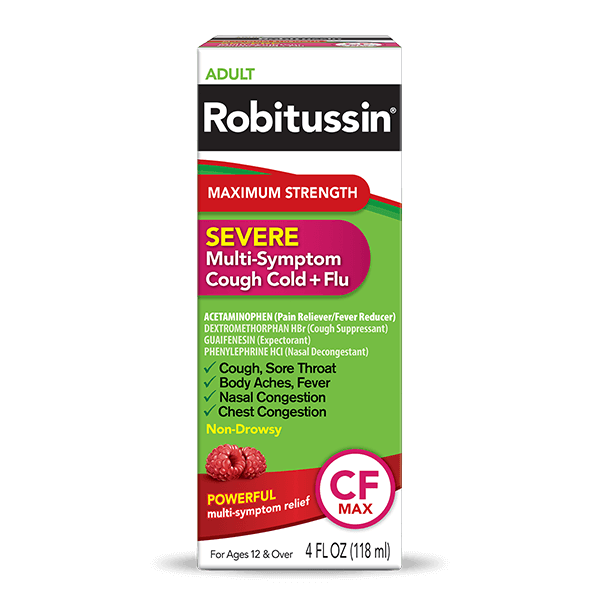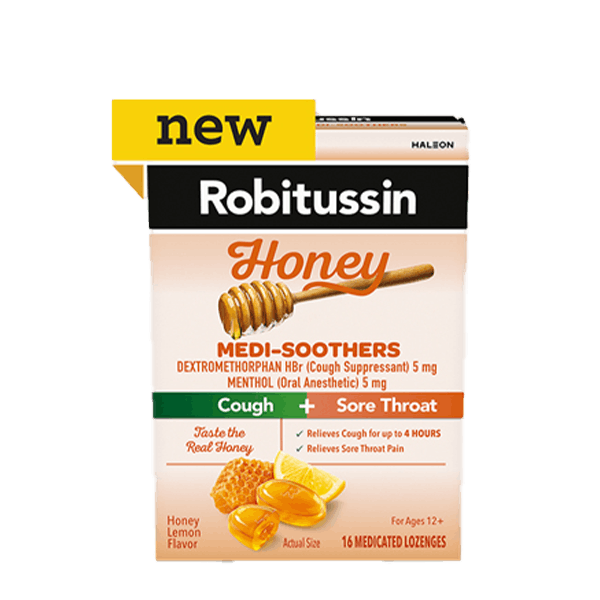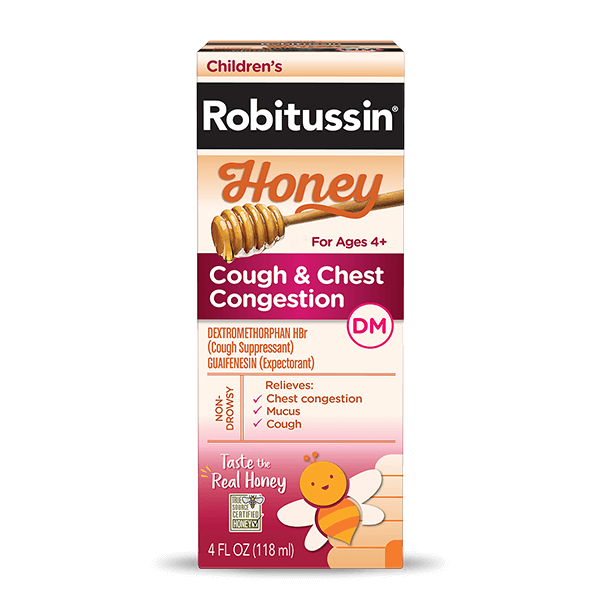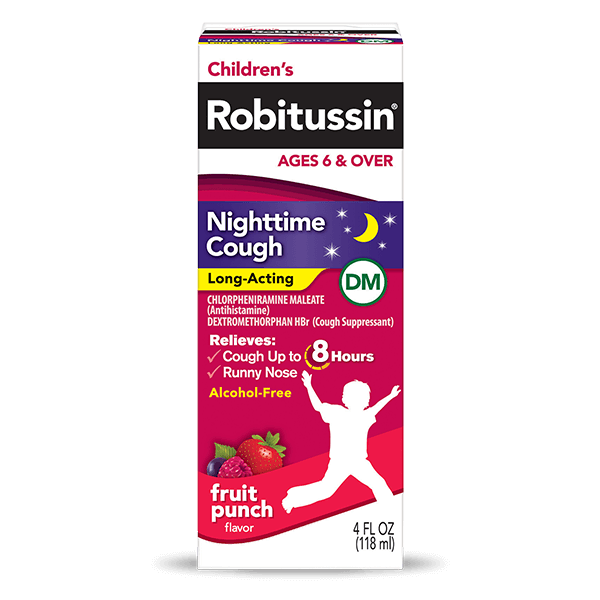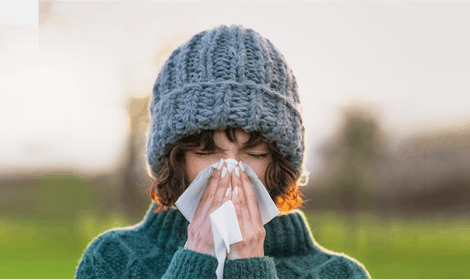How to Loosen Chest Congestion When You’re Sick
Having chest congestion when you’re feeling sick can be unpleasant. It’s bad enough to experience symptoms like coughing and sneezing when you’re sick, but having to deal with chest congestion as well can be irritating. Chest congestion feels uncomfortable and coughing up mucus and phlegm regularly is no fun either. Read on to find out about what’s causing your chest congestion and how you can break it up.

What are some causes of chest congestion?
Respiratory illnesses can cause severe chest congestion, and a common respiratory illness that causes chest congestion is bronchitis.1 Bronchitis occurs when the bronchioles are inflamed and produce too much mucus, and symptoms of bronchitis include a frequent cough that produces mucus, fatigue, fever, and a wheezing sound when breathing.1 The two types of bronchitis are chronic and acute, and the more common form of the illness is acute bronchitis.1
The common cold is another respiratory illness that causes congestion.2 While the common cold is different from bronchitis, people with weakened immune systems, asthma or respiratory conditions can develop bronchitis or pneumonia through a common cold.3 There is no cure for the common cold, but resting and drinking plenty of fluids while taking over-the-counter medications can help ease symptoms.3
How to break up chest congestion
While chest congestion can be annoying, it’s important to loosen mucus and thin bronchial secretions so you can break up chest congestion and breathe easier. If large amounts of mucus collect in the airways, breathing may become more difficult and infection may occur.4 Here are some tips on how to loosen chest congestion so you can breathe easier.
1. Drink lots of water
Drinking lots of water can help loosen mucus so you can cough it up and out of your system.5 It’s also important to drink plenty of water when you’re feeling sick so you can stay hydrated and support your body. Drink lots of water and other hydrating fluids like non-caffeinated herbal teas and broths to break up chest congestion and keep your body properly hydrated.
2. Using steam
Deep coughs caused by chest congestion can become more productive with the help of steam. Inhaling steam helps to loosen the mucus in your system so you can get rid of it easier.5 The easiest way to inhale steam is to turn on your shower to fill your bathroom with steam, but you can alternatively breathe in the steam emitting from a boiling pot of water. Use extra caution when boiling water and avoid holding a towel over your head to trap the steam, as it can get too hot and burn your airways.5
Another easy way to fill your room with steam is to plug in a humidifier. Humidifiers are available for purchase at most drug stores and are a great way to add moisture to the air. Using a humidifier can especially be beneficial at night to so you can breathe easier while sleeping.
3. Taking expectorant medicines that contain guaifenesin
When looking for cough medicines to take, make sure you check the product label for an ingredient called guaifenesin. Guaifenesin is used to help clear chest congestion from a cold or flu by thinning out the mucus or phlegm in the lungs.7 You can take guaifenesin in the form of a solution, syrup, liquid, tablet, or packet.7
Robitussin Cough + Chest Congestion DM is a cough syrup that contains guaifenesin to help loosen mucus and thin bronchial secretions to drain bronchial tubes. The other active ingredient in this product is dextromethorphan, which works to suppress cough. Children from 4 to 12 years of age should take Children’s Robitussin Cough & Chest Congestion DM to temporarily relieve cough from minor bronchial irritation and help to loosen phlegm.
Use these tips and tricks to help break up your chest congestion. Although there is no immediate cure for illnesses like bronchitis or the common cold, there are ways to ease any irritating symptoms and help your body with the recovery process. Check out all other Robitussin chest congestion relief products to find the best symptom relief for you.
Source Citations:
- Bronchitis. Cleveland Clinic. https://my.clevelandclinic.org/health/diseases/3993-bronchitis Accessed 8/18/2021. See source doc for referenced text.
- Adult Outpatient Treatment Recommendations. Centers for Disease Control and Prevention. https://www.cdc.gov/antibiotic-use/clinicians/adult-treatment-rec.html Accessed 8/18/2021. See source doc for referenced text.
- Common Colds: Protect Yourself and Others. Centers for Disease Control and Prevention. https://www.cdc.gov/features/rhinoviruses/index.html Accessed 8/18/2021. See source doc for referenced text.
- How to Cough Up Mucus & Phlegm From Chest Congestion. National Jewish Health. https://www.nationaljewish.org/conditions/copd-chronic-obstructive-pulmonary-disease/overview/lifestyle-management/how-to-cough-up-mucus-phlegm?modal=1#cough-up-phlegm-mucus-adults Accessed 8/18/2021. See source doc for referenced text.
- Do Any Bronchitis Home Remedies Actually Work? Cleveland Clinic. https://health.clevelandclinic.org/bronchitis-home-remedies/ Accessed 8/18/2021. See source doc for referenced text.
- COPD: Clearing Your Lungs. University of Michigan Health. https://www.uofmhealth.org/health-library/za1357 Accessed 8/18/2021. See source doc for referenced text.
- Guaifenesin (Oral Route). Mayo Clinic. https://www.mayoclinic.org/drugs-supplements/guaifenesin-oral-route/description/drg-20068720 Accessed 8/18/2021. See source doc for referenced text.
- **True Source Honey is ethically and transparently sourced. Click here to learn more
- ^Read more about our non-GMO standard. here
- ⚬This product contains the active ingredients Dextromethorphan.
- **This product contains the active ingredients Dextromethorphan and Guaifenesin.
- *These statements have not been evaluated by the Food and Drug Administration. This product is not intended to diagnose, treat, cure or prevent any disease.
- Use as Directed.
